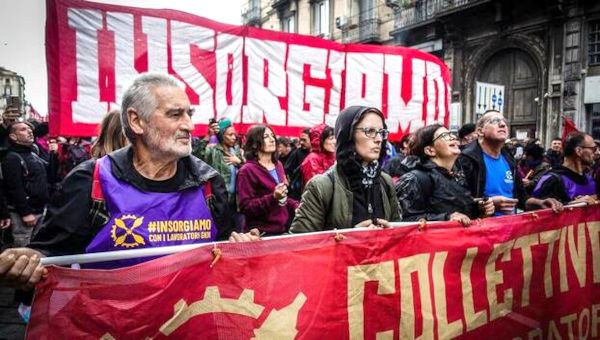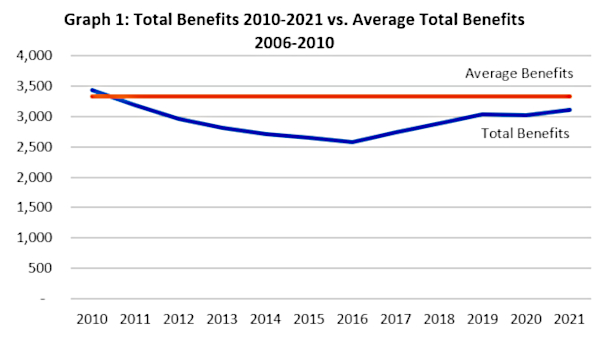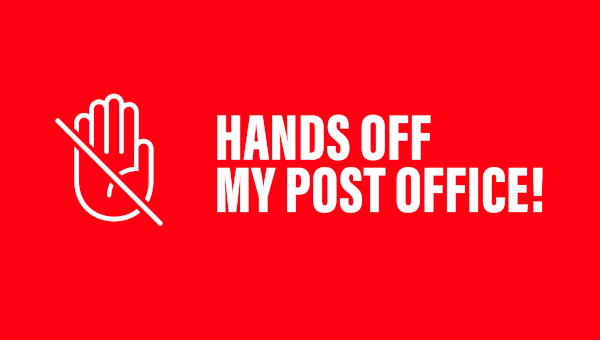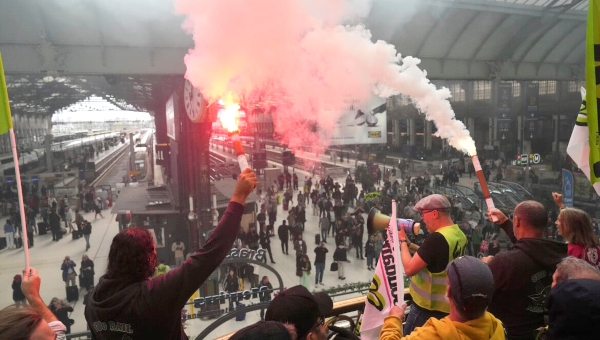How Labor and Climate United Can Trump Donald Trump
Donald Trump and his congressional Republican allies have taken control of the US government. The result threatens to be devastating for both labor and the climate – not to mention immigrants, African Americans, Muslims, women, children, the elderly, the disabled, LGBTQ people, and many others.
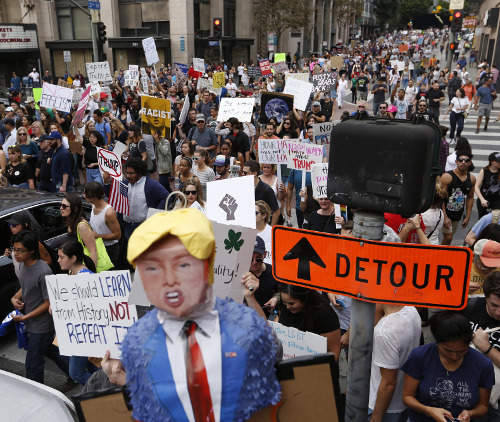 The Trump regime is potentially vulnerable because it only represents the interests of the top 1% of the top 1%. But it has a potentially winning strategy to rule nonetheless: keep those who might stand up in the interest of the 99.9 per cent divided and therefore powerless. While Trump has played black against white, Latino against Anglo, women against men, gay against straight, and exploited many other divisions, his “trump card” may well be his ability to divide labor and climate advocates.
The Trump regime is potentially vulnerable because it only represents the interests of the top 1% of the top 1%. But it has a potentially winning strategy to rule nonetheless: keep those who might stand up in the interest of the 99.9 per cent divided and therefore powerless. While Trump has played black against white, Latino against Anglo, women against men, gay against straight, and exploited many other divisions, his “trump card” may well be his ability to divide labor and climate advocates.
The Trump ascendancy creates a new context for addressing long-standing tensions between organized labor and the environmental movement, between workers’ job concerns and everyone’s need to protect the climate. Trump and his congressional Republican allies intend to exploit these tensions to the max. But their threat to workers, the earth’s climate, and society as a whole make cooperation against them imperative for both organized labor and the climate protection movement. Forging a force that can effectively counter Trumpism requires change that will involve tension within each movement as well as between them, but that may be necessary if either is to have a future. The alternative is most likely decimation of both movements and of everything they are fighting for.
A New Labor-Climate Cooperation Has Begun
Two examples suggest labor-climate cooperation may be possible in the Trump era. One was a direct confrontation between the incoming Trump administration and an alliance of unions and environmentalists. When the Trump transition team sent a questionnaire to Department of Energy staff demanding to know the names of people who had attended meetings or conferences on climate change, American Federation of Government Employees President J. David Cox Sr., warned against “a return to the political witch hunts of the 1950s.” He demanded that, “President-elect Trump must instruct his transition team to cease this profoundly anti-democratic behavior immediately.”[1] This pushback was joined by environmental and scientific organizations. Ken Kimmell, president of the Union of Concerned Scientists said, “The Trump transition team’s pursuit of the names of Department of Energy employees involved in work on climate change is unacceptable.” It “smacks of McCarthyism and should cease immediately.” Further, Department of Energy employees should “resist complying with any demands that would compromise the independence of the agency’s experts.”[2] The Department of Energy rejected the Trump transition team demands and said it would not name names. A few days later the Trump transition team disavowed the questionnaire, claiming that it was “not authorized.”
Another example shows that cooperation around climate, jobs, and justice is possible in the Trump era. Shortly after Trump’s election, the Illinois legislature passed the Future Energy Jobs Package which will invest at least $500,000,000 in new solar, community solar, and energy efficiency programs targeted at low-income communities, combined with job training for work in the solar industry. The bill was a compromise among a wide range of forces, and included a bailout for nuclear power plants, but attempts to include a coal company bailout and huge consumer electrical rate increases were defeated. The bill will create 3,000 MW of new solar generation and 1,300 MW of new wind generation by 2025 in Illinois. Local jobs will be guaranteed because utilities will have to use in-state solar and wind energy sources, rather than purchase renewable energy out of state.[3]
Labor and Climate Movements: Divided We Fall
Wars, depressions, revolutions, unnatural catastrophes caused by climate change, popular enthusiasm or repudiation, Trump’s personal idiosyncrasies, and other “unknown unknowns,” all make it impossible to anticipate the course of Trump’s rule. It is safe to predict, however, that it will be devastating for labor and climate.
After half-a-century of decline, American trade unions still have 15 million dues-paying members, but they are barely a shadow of the force they once were. Today only 11% of wage and salary workers are in unions, compared to 20% in 1983. Less than 7% of private sector workers are in unions. 35% of public sector workers are union members, but they are already under devastating attack which will intensify under Trump.[4] The inability of unions to hold many of their own strongholds against the 2016 Trump tide manifests that decline. Exit polls (not necessarily reliable) gave Clinton an 8-point lead in union households nationally; the comparable figure for Obama in 2012 was 18 points.[5]
The Trump administration and its Republican allies in Congress and state governments have plans for organized labor. Pro-worker decisions from the Obama administration and the NLRB are likely to be reversed immediately. State and perhaps even national legislation will follow the lead of Indiana, Michigan, and Wisconsin, which have virtually abolished collective bargaining rights for government workers and established so-called right-to-work laws under which unions are required to provide services to workers who refuse to pay union dues. Once Trump appoints a conservative justice to the Supreme Court, unions are likely to have little or no legal protection of any kind; rightwing legal doctrine could easily take us back to the days when unions were criminal conspiracies and judges could order strikers back to work with nothing more than their signature on an injunction form.
While Trump talks jobs, his plans will eliminate thousands of jobs in union strongholds. He has proposed a hiring freeze and accelerated reductions in forces for federal government employees. Republican plans in Congress include cutbacks in Medicare funding and other healthcare, de-funding of public transportation, and downsizing and privatization of education and other public services, all of which will lead to major job losses. The pensions, healthcare, and even social security of millions of union retirees are also on the chopping block.
Beyond its own actions, the Trump regime will also unleash other forces that want to destroy labor. As with Ronald Reagan and the Air Traffic Controllers, Trump’s anti-labor initiatives will be a signal that it is open season on unions. Those corporations that still have unions can essentially stop bargaining with them – without fear of consequences from a Trumpian NLRB. Local politicians, police forces, and vigilantes, controlled by employers and unrestrained by a Trumpian judiciary, will expand the use of violence against organizing and strikes. Can the blacklist and the company goon squad be far behind?
Trump and the forces around him are out to eliminate organized labor from American life and politics. Their anti-union agenda is driven by both greed and ideology. They aim to cut wages and to make profits from privatization. They also aim to eliminate organized labor as the largest force that supports the Democratic Party and progressive political action.
Dilemmas and Poison Pills?
The coming of the Trump regime presents organized labor with a dilemma. On the one hand, Trump’s infrastructure program and military build-up promise to provide jobs for some union workers; his proposals to end trade deals and put tariffs on manufacturing imports align with long-standing labor opposition to pro-corporate globalization. On the other hand, Trump and his Republican allies in Congress propose tax, budget, and social welfare policies that will directly impoverish most workers; his cabinet appointees are proven enemies of organized labor and the rights of workers; legislation, executive policy, and supreme court appointments are likely to lead to what one labor staffer has called an “extinction-level event” for organized labor. The attack is likely to be fast and furious; already Trump’s Republican allies in the Kentucky legislature have begun the process of passing House Bill 1, which would let workers work under a union contract without paying dues and House Bill 3 which would repeal the state’s prevailing wage law.[6]
Some in organized labor are already advocating that unions try to work with Trump on trade and infrastructure issues. Under normal circumstances it might be possible for labor to support those parts of the Trump agenda it considered beneficial and oppose those that are harmful. But these are not normal circumstances. To say that labor can work with Trump is to normalize his regime. That will be suicidal for labor at a time when Trump and his allies are attacking the very existence of unions and the right of workers to organize. It ignores the likelihood that even Trump’s “good things” will come with poison pills. His infrastructure plan, for example, is being described as based on “private equity” and “low cost construction.” The result is likely to be the banning of prevailing-wage rules and union security provisions for construction workers. And to “cooperate” with Trump is to disregard the reality that labor’s allies are facing devastating attack as well; if labor wants their support, it will need to support them in turn. The defeat of Trump requires defining him not as a normal horse-trading politician but as a threat to working people, society, and a livable planet.
The prospects for the climate under Trump and his allies are at least as dire. He has alleged that global warming is a fraud perpetrated by the Chinese to steal American jobs. He has threatened to ignore or even withdraw from the Paris climate agreement. He has pledged to expand fossil fuel extraction to the max; new laws, executive orders, and agency rulings will no doubt authorize a huge development of mines, wells, pipelines, power plants, and other new fossil fuel infrastructure. Environmental regulation will be gutted; virtually anything will be permitted. Fossil fuels on public land will be “sold” at give-away prices. With Rex Tillerson as Secretary of State, Trump’s goals could be even more ambitious; for example, he could work with Putin to develop a US-Russian global cartel to capture and control the global energy business. Whatever the details, Trump’s agenda will accelerate global warming far beyond its already catastrophic trajectory.
For the climate protection movement, the Trump ascendancy means that the kind of lobbying and “inside game” at which it has excelled can no longer be effective, at least at the federal level. Some progress is still possible at a state and local level – as the recent Illinois energy legislation demonstrates – but only in cooperation with labor, climate justice, and other allies.
There will be vast opportunities – unfortunately – to raise public consciousness about the devastating effects of climate change, and to focus on the way Trump’s policies will aggravate them. There will also be plenty of opportunities for high-profile direct action confrontation with new fossil fuel projects that focus public attention on the way Trump and his allies are deliberately destroying the future of the planet – but which also risk potential conflict with sections of organized labor that see such projects as an opportunity for good jobs. The climate movement must be prepared for environmental actions to be met by the kind of slander, criminalization, brutality, official and vigilante violence, and use of legal and military power we saw at Standing Rock – but now authorized by a federal government full of fossil fuel executives. If the climate protection movement wants to have a future, it will have to find a way to appeal to the alienated Trump voters that not only gives lip service to their interests but actually wins them over.
Guidelines for a Labor-Climate Challenge to the Trump Agenda
The Trump agenda is not just a laundry list of bad ideas, but a unified threat to people and planet. What are the essential elements of a unified labor-climate response?
Develop and campaign for a unified alternative agenda around jobs and a just transition to climate safety. The labor-climate movement needs its own strategy which is both worker- and climate-friendly. It must include a just transition to 100% climate-safe energy and jobs for all. But it needs to go beyond that to a vision of a new economy based on values not greed. (See box below: “Economic Program for Climate, Jobs, and Justice”) Such a program needs to be projected into the broad anti-Trump movement and into the political arena.
Develop an alliance of unions and allies willing to fight the whole Trump agenda. This is already started with efforts like the Greenpeace-initiated pledge of United Resistance, the People’s Climate Movement, Our Revolution, and Labor Network for Sustainability’s Labor Convergence on Climate. Such a “big tent” needs to include unions that are not part of the AFL-CIO, such as SEIU, Teamsters, and National Education Association. Some unions may choose not to join because they are unwilling to take a forthright stand against the Trump agenda; it would be both absurd and catastrophic for that to prevent the rest of the labor movement and its allies from taking on a fight that is about the very right of unions to exist.
Expose Trump’s agenda: Virtually every aspect of Trump’s agenda is bad for both working people and the climate. It harms people and planet to aid the enrichment and empowerment of the rich and powerful. It is phony on jobs, phony on trade, and phony on climate. It needs to be exposed as an attack not only on particular groups like workers, immigrants, and women, but on society itself. Labor and climate movements should work together in every venue they can affect to expose the harm that the Trump agenda will do to working people and communities.[7]
Erode Trump’s base: Campaigns should target those who have been beguiled by Trump’s false promises. The campaign by Democrats and Bernie Sanders against Republican attacks on healthcare provides an example. Similarly, Fight for Fifteen‘s focus on a living wage for all could have considerable appeal among the poor white communities where Trump made his greatest inroads.
Block implementation of Trump’s agenda in the political arena: This can be done in part by building wide advocacy coalitions against each element of his program including his labor and climate policies. Whether Democratic politicians will fight the Trump agenda or simply keep their heads down is currently hanging in the balance. We need to let them know that they will have support and funding if they fight – and that they will lose it if they don’t. (Two-thirds of Democrats want their representatives to resist Trump.[8]) To the extent that Trump’s agenda is exposed and widely rejected, Republican politicians in swing districts will start to oppose parts of his program to differentiate themselves from him.[9]
Block implementation of Trump’s agenda on the ground: A good example was the defeat of the Trump transition team’s effort to gin up a witch hunt in the Energy Department. Blocking pipelines and other harmful infrastructure projects will be necessary; such actions must include alternative job plans for workers and communities; while some unions will no doubt oppose such actions, others should be encouraged to support them or at least remain neutral in the interest of workers’ own future and the solidarity of the anti-Trump coalition.
Act wherever possible to realize the labor-climate agenda: States, cities, and regions are still available arenas for positive labor-climate action. The Illinois Future Energy Jobs Package provides a case in point. Where such victories are achieved, they should be widely promoted elsewhere as examples of what can be accomplished.
Build a worker-friendly environmental movement: Research shows that union members are more concerned and more likely to take action around environmental and climate issues than non-union workers or the general public.[10] Nonetheless there is genuine resentment among many workers and union members about environmentalists who are perceived to be unconcerned about the impact of shutting down a fossil fuel facility or blocking an infrastructure project has on workers and their jobs. As part of building a broader cooperation, environmental groups need to join coalitions fighting for workers rights, such as the right of workers to a $15 minimum hourly wage and the right of public employees to collective bargaining. In the era of Trump’s offensive, there will be ample opportunities for environmentalists to reach out and establish new relationships with workers. Joining their picket lines is a good place to start.
Put Trump’s destruction of the climate and his attacks on workers and unions front and center in the case for his complete repudiation. There are innumerable reasons to want to reduce and eventually eliminate Trump’s power, including his aforementioned threats to immigrants, African Americans, Muslims, women, children, the elderly, the disabled, LGBTQ people, and many others. But his threats to working people and the climate go beyond any special group to include the interests of everybody who has to make a living and inhabit the earth. They represent common interests of all the many constituencies whose particular interests Trump threatens. As such they can be unifying threads that help bind the whole opposition to Trump and Trumpism together.
Recognize tensions but work for cooperation: There will inevitably be tensions within and between unions and between labor and climate movements. These tensions are likely to become outright conflicts in some cases, as they did of the Keystone XL and Dakota Access pipelines and in the building trades opposition to the AFL-CIO’s decision to work with climate advocate Tom Steyer. They may even intensify as unions allied with the fossil fuel industry find such allies in the highest seats of power in a regime that is intent on wiping out the rest of the labor movement. But the core interests of workers and the labor movement lie both in defeating Trump and in forestalling the devastating effects of climate change on themselves and their posterity. Civil rights, immigrant rights, healthcare for all, and other crucial issues also created tensions within organized labor. But in the end justice and common interests prevailed. They can do so again with labor and climate.
Labor-Climate Action as Social Self-Defense
From the day Donald Trump was elected President of the United States, thousands of people began to resist his agenda. Demonstrations against Trump broke out in American cities; police chiefs, mayors, and governors declared they would not implement his attack on immigrants; thousands of people signed up to accompany threatened immigrants, religious minorities, LGBTQ people, and women; technical workers pledged they would not build data bases to facilitate discrimination and deportation.
Trump’s agenda is no less than an assault on the planet and its people. The struggle against Trump and Trumpism is nothing less than the defense of society – what movements of resistance to tyranny elsewhere have called Social Self-Defense.[11] Social Self-Defense is the protection of that which makes our life together on earth possible. It includes the protection of the human rights of all people; protection of the conditions of our earth and its climate that make our life possible; the constitutional principle that all government must be accountable to law; and global cooperation to provide a secure future for people and planet.
The linked defense of the workers and the climate lie at the core of Social Self-Defense against Donald Trump and Trumpism. By unifying our forces, demonstrating our collective strength, and clarifying what we want and need, it can also help create the kind of movement that can not only defeat Trump and Trumpism, but bring about the just transition we need to establish a worker- and climate-friendly society. •
Economic Program for Climate, Jobs, and Justice
Create Good Jobs
Invest enough in climate protection to provide good jobs for all. The LNS report “The Clean Energy Future: Protecting the Climate, Creating Jobs, Saving Money” outlines a path to 80% greenhouse gas (GHG) reductions by 2050 while creating thousands of high quality jobs in construction and manufacturing, at no new costs. The Clean Energy Future plan should serve as a floor to which enough public investment is added to provide good jobs protecting the climate for all who want them.
Ensure quality of climate-protecting jobs. Climate protection strategy must be designed to provide the maximum number of good, secure, permanent jobs with education, training, and advancement that provide maximum possible improvement in our job shortage. Jobs should be based on steady, sustainable work and investment, not stop-and-go boom and bust. The human right of all workers to organize, bargain collectively, and engage in concerted action must be protected.
Protect Threatened Workers and Communities
Establish a superfund for workers and communities to ensure that “no worker is left behind” by the transition to a climate-safe economy.[12]
Make those adversely affected eligible for an equivalent to the “GI Bill of Rights,” including:
- full wages and benefits for at least three years
- up to four years of education or training, including tuition and living expenses
- decent pensions with healthcare for those ready to retire.
Invest in local economies dependent on fossil fuel jobs before devastating economic disruption begins. Establish a community and worker protection fund to collect money in advance to replace taxes and fees paid by fossil fuel facilities and to invest in good jobs in affected communities. Target investments in fossil fuel energy communities designed to create jobs before or at the pace that fossil fuel jobs are declining.[13]
Revise and include the provisions of the “Clean Energy Worker Just Transition Act” recently outlined by Sen. Bernie Sanders (I-Vt), Jeff Merkley (D-Ore.) and Edward Markey (D-Mass.). The bill initially targets coal workers, but over time expands to other energy sector workers as well. It provides unemployment insurance, healthcare, and pensions for up to three years and job training and living expenses up to four years. Employers receive tax incentives to hire transitioning employees. Counties where 35 or more workers become eligible for the program can receive targeted development funds. The right of workers to join unions is protected by streamlining NLRB union recognition provisions.
Remedy Inequality and Injustice
Use good, stable jobs protecting the climate to challenge the growing inequality and injustice of our society. Include strong racial, gender, age, and locational hiring requirements in all climate programs to counter our current employment inequality and provide jobs pipelines for those individuals and groups who have been denied equal access to good jobs. Use climate policy to remedy the concentration of pollution in low-income communities, the lack of transportation, education, health, and other facilities in poor neighborhoods, and other manifestations of discrimination.
Protect low-income consumers from the costs of climate protection by limiting bills of low-income households to 6 per cent of gross income, increasing energy efficiency, and providing universal solar access to low-income households.[14]
Evolve Toward a New Economy
The core of the transformation must be the transition to renewable energy and the reduction in energy use through energy efficiency. But the needed transition involves more than just energy. It can include farming that extracts carbon back out of the atmosphere and begins to restore the damage done by the burning of fossil fuels. It can include the redesign of metropolitan systems to provide a better quality of life with less energy use. It can include massive expansion of activities like education, health, and recreation to provide a higher quality of life for all while requiring far less energy. •
This article was first published on the LNS website.


